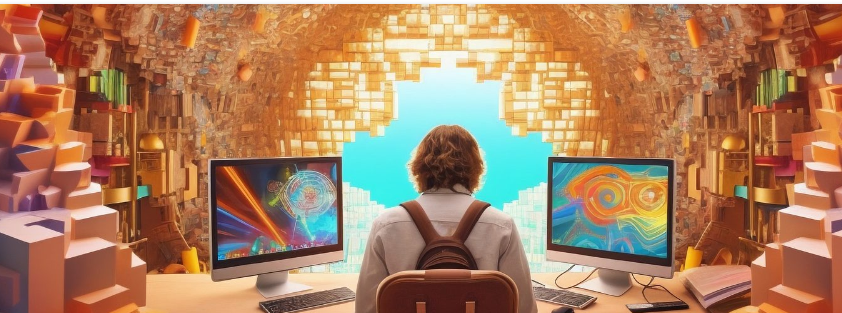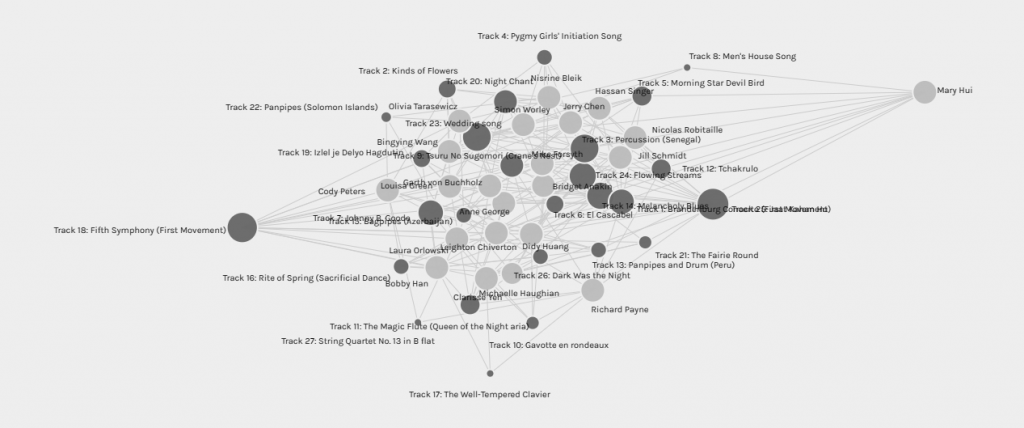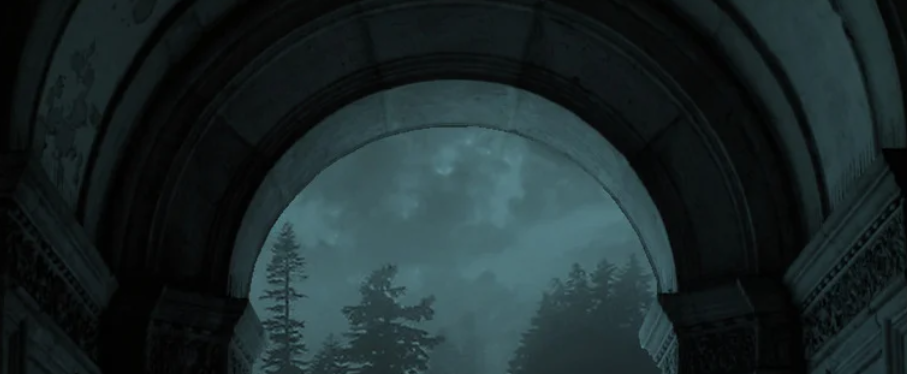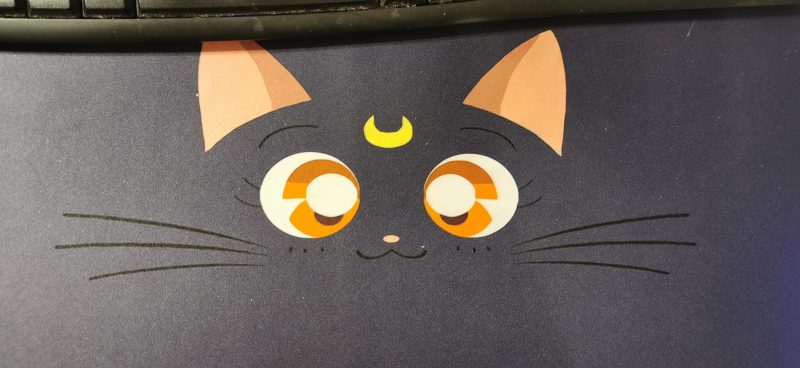Before I start, I just wanted to appreciate the opportunity to take ETEC 540. This is one of the final courses I have to take for my MET program and what a memorable experience this has been. While I had moments of confusion, I also had many moments of clarity as I progressed through the course.
I do not take this opportunity for granted.
Focusing on the actual task at hand, I am tasked to choose 6 items from on 6 different blogs (from my classmates) and create links and connections to the class readings, my own understanding of the material, and my peers’ interpretation of the course material.
1) Introductory week
In all the courses I’ve taken in the MET program so far, I’ve always enjoyed participating in introductory week because I enjoy reading everyone’s background and learning from their experience. I also share everyone’s excitement about a new start of a semester and everyone is happy to contribute.
Connection: Louisa Green
Louisa Green decided to create her first task using Prezi and the post was hosted using Wix. In contrast, I created my first assignment using WordPress and used an existing template with a left navigation. My classmates can easily find all my posts that way.
At first I thought her assignment was a video, but it actually had interactive buttons for people to navigate. Like me, she had multiple bags. However, instead of focusing on only 1 bag, Louisa was able to include all three and had a very interesting way to present all 3 to her audience. In terms of co-authoring, I’m not sure if Prezi has a feature that allows people to comment or to provide feedback. I also do not see a feature for commenting in the task page. With that in mind, I really appreciate the interactivity of Louisa’s work, because she was able to include interactivity and I only included static images and text to create my introduction.
I also liked the fact that you can “dig deep” into finding more about Louisa using the interactive buttons. For example, I clicked on the black bag and it listed out a list of items, then she had a second navigation where when clicked, I could find out more information about her. The “digging” gesture is very similar to the motion we use in real life when we “dig” through our bags to find out what we want. In this case, I can find out more about Louisa.
In comparison, my own webspace has a comment section where users can interact and provide their thoughts and feedback. What my site lacks in interactivity, it makes up in ease of access to content. Users don’t have to scroll back and forth in order to find their information. In addition, I like having bigger text so that people can read without having to squint or afford an additional click in order to view my post in full screen / to
2) Does language shape the way we think?
I really enjoyed this week’s reading because it focused on how language is a technology. No matter if it is words, sounds, dance, etc., it will keep evolving with every generation. For this week, I chose Garth’s post to focus on because while I lived in Canada for quite a long time, my main language is English. It is interesting to see another person whose primary language is also English and see what their experience is like after listening to Dr. Lera Borditsky’s lecture.
Connection: Garth
In terms of the content of the post, the difference between our posts is that I focused mainly on the readings of the week and made connections to how the 3 videos can relate to each other. I noticed that Garth referenced to a book called the Power of Language. He began by focusing on his own experience and then slowly moving towards technology. Garth and I also wondered how language can shape thinking. Dr. Boroditsky mentioned that the 2 ways in which language can be used to change our thinking is to “Train new ways of talking” and “To take language away”. I appreciate that Garth included real life examples such as topics about abortions and using the term “pro life” or “pro choice” and how it can be used as a tool for social engineering, whether it can be used in a positive / negative context.
Similarly, I used dance as a way to “train new ways of talking” as stories can be spoken through dance and movements of the body, rather than just words. New performers can take a style or a portion of a dance piece and evolve it in another piece to create a story that can create positive / negative impact on the audience.
We also agreed about technologies / social media as the new way of communication and how we can include images / videos, etc. as new languages to communicate (whether it is grammatically correct or not). It is also a natural occurrence as each new generation arise. Instead of using just text or hand drawings, humans has evolved communicating through text and instant messengers like whatsapp. I included 21 century “innovative” apps like Steezy, Tiktok and other social media platforms to create and share dances, tutorials and other facts through videos with their peers and colleagues.
Technologies and Platform
Both Garth and I used WordPress. He included a reference to the Power of Language, which people can easily access if they wish to explore the reading further. He included social media buttons so people can like or tweet his post if they wish to share it. Both of us included a comment section so people can include their feedback and thoughts.
Constraints and Pedagogical Underpinnings
Garth included a very good point about people who live in multiple places around the world score better on tests of creativity. He also included how a lot of the greatest authors are non-native English speakers and stresses that multilingualism is important in educational practices. It reminds me of the Shetlandic poet, Christine de Luc and how she was able to easily switch dialects from Shetlandic to English while she casually continue to read her poem. Perhaps being able to grow up or explore multiple environments shapes the way one thinks and interpret languages. The unique experience can, as Dr. Borditsky mentions, “train people to talk in new ways”.
4) Manual Scripts
For my third link, I decided to focus on week 4’s manual script assignment. I learned about the evolution of word and how it was passed down from generation to generation. It was interesting to see how paper was invented and how it was initially used to document laws and policies. Eventually it evolved into papyrus paper and every day people can use it to invent stories and to create artwork. Now we have have evolved using digital canvases such as WordPress where anyone can freely type their thoughts down and conduct business with a click of a button. I chose to compare and contrast my task with Nick Robitaille‘s post as we both did a manual script rather than create a potato stamp for our assignment.
Connection : Nick Robitaille
For this exercise, both Nick and I had no trouble transferring our stories about our newly developed hobbies into written words on paper. However, we both found the processes physically demanding as we are both accustomed to producing languages using texting or typing. Both of us shared that we used paper to drop down notes or lists using sticky notes / note books / whiteboards, etc. but we would use technologies such as word count, spell check and other every day tasks using phones and computers. We also mentioned about spell check , word count and grammar check and how these are what we take for granted.
I was surprised that while our experience was quite similar, Nick only had 2 pages of text, where I had 8 pages of text. It doesn’t seem like my writing was much bigger than his, but he was able to save a lot of space and saved some trees! In terms of tidiness, I agree that the mechanical version provides the backspace button which eliminates the labour of having to cross out errors and grammar mistakes or difference in interpretation.
In my post, I also included the idea of security. During the pandemic, a lot of people used the pen-to-paper method to store their private information if they do not wish to share it with the rest of the world. Indeed, everything we type / say inside a web browser can be tracked and distributed as data. It is something I try to intentionally tell myself to avoid any cyber security related incidences.
Technologies and Platform
Both Nick and I used WordPress to document our process. Both of us included a comment section so people can include their feedback and thoughts. I’m not sure if there are any constraints to the course, in fact, this will be a great artifact to share with others (aliens?!?!) and how we as a species have evolved / what we do in our everyday lives before artificial intelligence (AI) become our supreme overlords.
Constraints and Pedagogical Underpinnings
Nick and I in our post both hinted that we have come a long way from using paper to record lists of laws to now being in the digital age where we can freely create our own worlds (i.e.: create stories to distribute to peers in seconds vs taking weeks to send a letter via carrier pigeon).
7) Mode Bending
Task 7 was tough because it was very hard to recreate Task 1 using just audio alone. However, Olivia Tarasewicz found a very funny way to “dig deep” into finding her bag. Both of us took a completely different approach but had similar thoughts while completing the assignment. That is, text is not just a written language and can be depicted using music, dance, poetry, etc.
Connection : Olivia Tarasewicz
Olivia was able to achieve what she wanted to convey by creating a detective story that took the focus off her as a central character, to someone who is not able to provide their side of the story. By including action and suspense into the narrative, I found myself being drawn to the story right away and wanted to find out more right away. Both of us took time to think of what is the right approach in handling this. While there is no right or wrong way, I believe both of us were able to conclude that while language can be depicted using sounds, it is hard to describe individual or specific people, place, or thing without using text.
For my project, I focused on language as music and that a simple piece of music can remixed overtime, but the base sheet music is the same. I also stressed that it is important to keep our history as accurate as possible as each generation can learn from the next.
Technologies and Platform
Both Olivia and I used WordPress to document our process. Both of us included a comment section so people can include their feedback and thoughts.
Constraints and Pedagogical Underpinnings
As previously stated, it was very hard to describe the process using only audio. If I had to do it again, perhaps I would get rid of the robot voice and just include the 3 songs to see if the audience is able to capture the 3 different sounds which stems from the same sheet music.
9) Network Assignment Using Golden Network
In week 8, the class was tasked to choose 10 songs out of 27 so we can create a set of data to interpret. Then in week 9, we upload this data into Palladio and was tasked to see if we can see the reason why people chose the songs they did. Upon reading Jerry Chen‘s blog post, I found that we had similar findings, but both Jerry and I had different methods of achieving the same conclusion.
Connection : Jerry Chen
Both Jerry and I were able to find the “Top voted song” using the facet dimensions tool. Jerry took it one step further to sort by “communities” and how 6 groups of people chose the same songs. He also found that the top 10 songs had “at least 45% of class votes”. In the section called “Familiarity” he was able to identify the 2 most popular music genres to speculate that perhaps the reason why people chose the songs could be because the popularity of the music styles of the popularity of the artists.
I chose another direction and found out the two “least voted songs” (they were tied). My rationale was to compare and contrast the 2 songs to see whether they had significant different in beat, sounds, genre, etc. I went to each blog to see why people chose what they did. Then I played around with the different categories. Similar to a pivot table in excel, I played around with each category to see if any of them makes sense.
However, even though both Jerry and I used very different approaches, we both found the rationale inconclusive by viewing plots and visual data alone.
Technologies and Platform
Both Jerry and I used WordPress to document our process. Both of us included a comment section so people can include their feedback and thoughts. If there was a way to pull the rationale section from each of our blogs, perhaps there is a plugin in WordPress that can do this and we can all plug in the rationale of why we chose the songs (list from drop down), that may be interesting.
Constraints and Pedagogical Underpinnings
Jerry and I both hinted that while there are facets that represented geographical locations, our classmates did not choose the songs based on where it was originally composed. Perhaps more research is needed in order to reach our conclusion.
12) Speculative Futures
Task 12 was a lot of fun. We were tasked to play a game then create our own stories and narratives based on what was generated from AI. I was so impressed with Bridget Anakin’s task because she create a short story and poem based on her given scenario! I was really excited to read it and to see if there are any similarities / differences to mine 🙂
Connection: Bridget Anakin
I was immediately immersed into the story that was created by Bridget. The images she chose for the cover was also fitting since. Seems like the tone and the setting of her story was quite dark. I really enjoyed her writing, and wished I was able to create short story as exciting and engaging as the one composed. I believe the generator created a completely different story for mine, because I created a short escape game using Genially about candies and how it was found after 2 generations. I was able to include images that matched the 2 different eras.
Both of us were able to hint at “speculative” design into our short stories. The quote I included from Mitrović is quite similar to the tone of her story.:
AI can “open up all sorts of possibilities that can be discussed, debated, and used to collectively define a preferable future.” (Mitrović, 2021).
She was able to capture the darker side, while I was able to capture the more hopeful side of the future when AI takes over.
Technologies and Platform
I continued to use WordPress to document my process and was able to embed the game created using Genial.ly into my post. The borders look a bit funny after embedding, so I included a link on top of it so people can also play in full screen mode. Bridget was able to embed her story into Google Sheets and it looks like she created the story using Canva. The navigation was a bit tricky as I find myself confused clicking back and forth between pages without any arrow keys. I was able to scroll up and down, but the 2 scroll bars created a bit of confusion. I was able to find the full screen mode after clicking on the blue link underneath.
Constraints and Pedagogical Underpinnings
An assignment based on an existing game is a great idea. I really enjoyed playing it and coming up with the narratives while incorporating my own ideas into it. It would be interesting to see if we can incorporate AI somehow, similar to week 3’s assignment. Instead, we use ChatGPT to create a narrative based on the scenario and observe how fast it is able to generate it. It is still a scary thought that AI will eventually shape our environments into something that is unrecognizable. However, I am still hopeful that there are still good that can enhance human life. If that is allowed.











